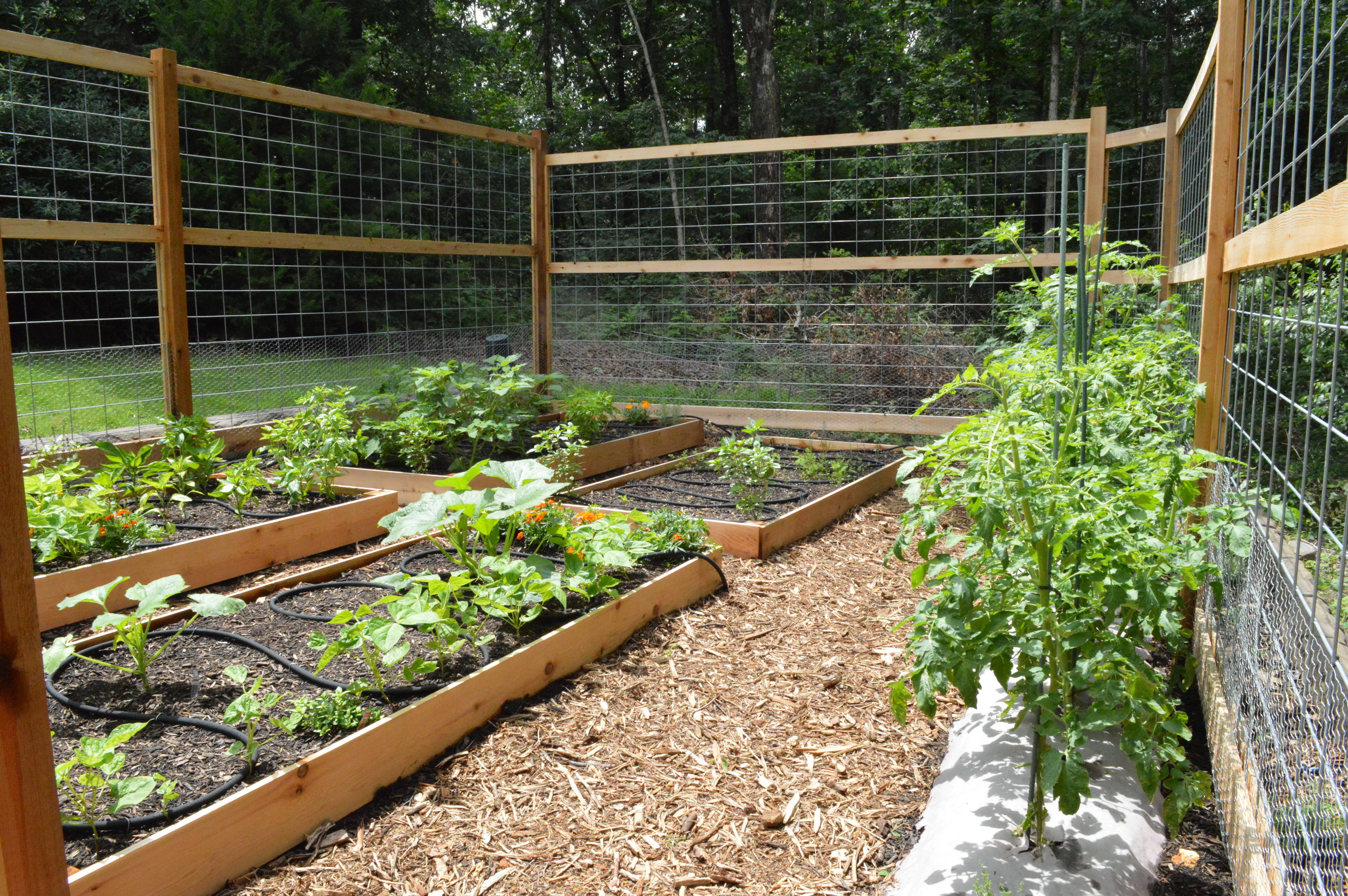This post is part 3 of my series: Getting Started with a Year-Round Garden.
Irrigation needs are unique to your own individual garden. To know what type you want to use, this is a basic guide to help you decide. Each type of irrigation has pros and cons which may vary based on geographical location.

Types of Irrigation Systems
-
Overhead irrigation
-
Drip irrigation
-
Soaker hose irrigation
#1 Overhead Irrigation
Overhead watering uses a sprinkler system to deliver water to the space above or surrounding the foliage of the plants.

Overhead watering is a great option if you live in a desert climate with low humidity and/or if you are growing plants which aren’t susceptible to waterborne diseases (leafy greens, root crops). It is more advantageous in desert climates for seed starting as well because it keeps the whole soil surface wet allowing for better germination.
I would advise against using overhead watering in areas that are humid and already experience high rainfall amounts. I used overhead watering initially when I set up my potager garden. I am in Arkansas and we get an average of 47 inches of rainfall per year. The humidity generally high as well.
Since I was growing all kinds of plants, including disease prone ones like tomatoes, peppers, and cucumbers, I had many fungus and blight problems. On top of that, our water is expensive, and much of the water went to the walkways which I made very wide, between three and four feet. Overhead watering wasn’t a good fit for my location.
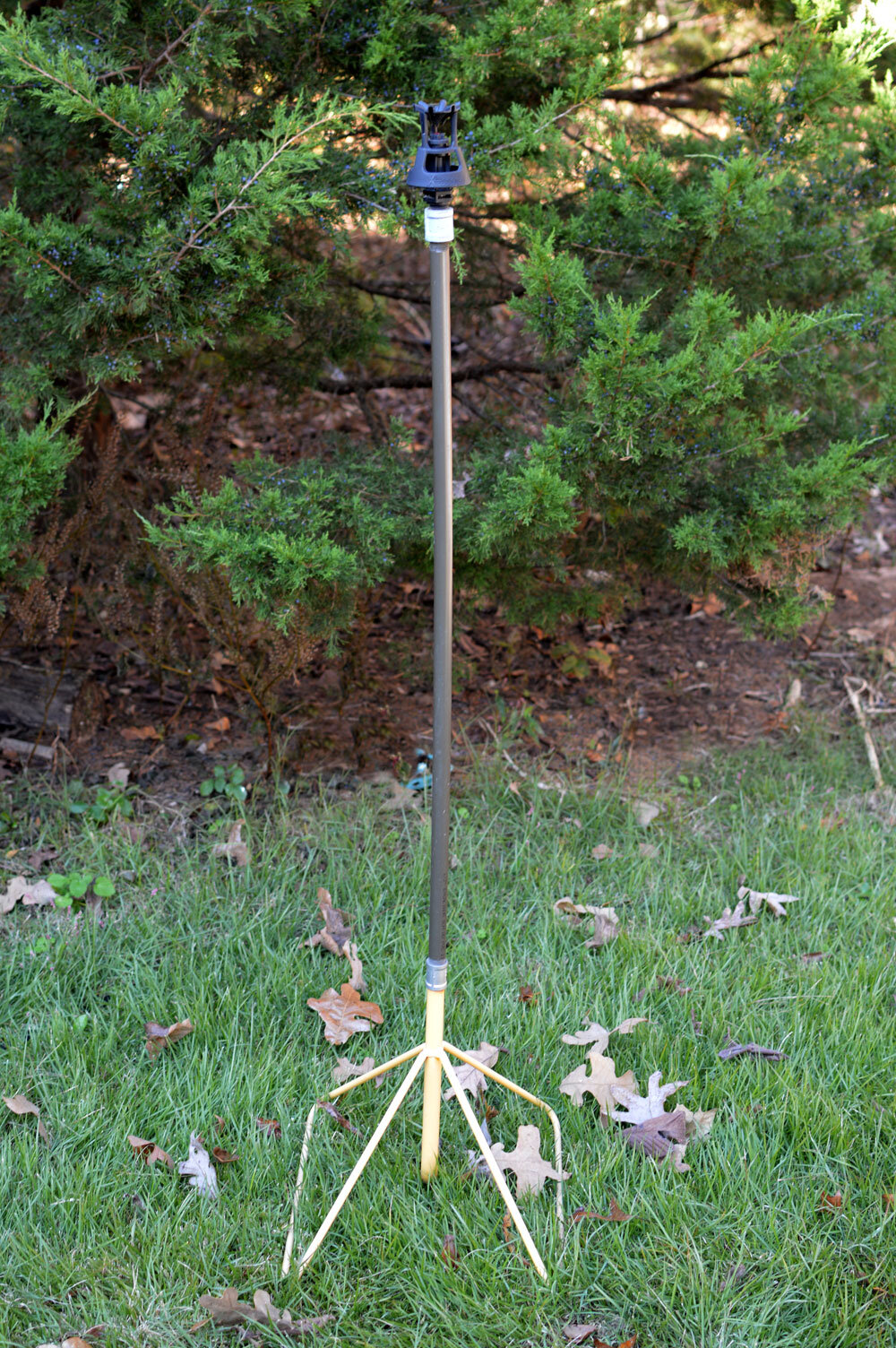
There is much to be learned from gardeners who sell their harvest for a living and garden on a larger scale. I was surprised to learn that well known market gardeners like JM Fortier and Curtis Stone use mostly overhead watering.
JM Fortier says that he prefers overhead watering because it is easy to weed and hoe and saves lots of time. He also sells a large amount of greens and roots so it works well because those aren’t prone to foliar fungal diseases.
Curtis Stone lives in a desert area and says the overhead watering helps with better germination because soil dries out very quickly. He is switching over many of his drip irrigation systems to overhead watering because it is better for his location. I found this video useful for learning about overhead watering systems. https://www.youtube.com/watch?v=flv1vf3gLbI
JM and Curtis also use drip irrigation in certain areas of the garden but I’ll explain more about in the Drip Irrigation section.
Benefits of overhead irrigation
-
Overhead watering is fantastic for starting seeds outdoors. It evenly waters the entire bed making it ideal for seed germination.
-
Since there are no hoses in the garden beds it makes it easy to weed using a hoe or tool.
-
Less time for set up and take down
-
One of the least expensive irrigation methods because one sprinkler serves many plants
Drawbacks of overhead irrigation
-
Can promote foliar diseases on plants
-
It waters everything including including aisles promoting weed growing everywhere
-
Uses much more water
-
Potential for wind drift and evaporation before it gets to the root zone.
-
It promotes much more water runoff.
#2 Drip Irrigation
Drip irrigation is a method of watering plants that uses controlled delivery of water directly to the plants. Usually, there are holes in specific spacing intervals in conjunction with the plants being irrigated. For example, when planting lettuce, you may have hole for the water to drip from the hose every six inches.
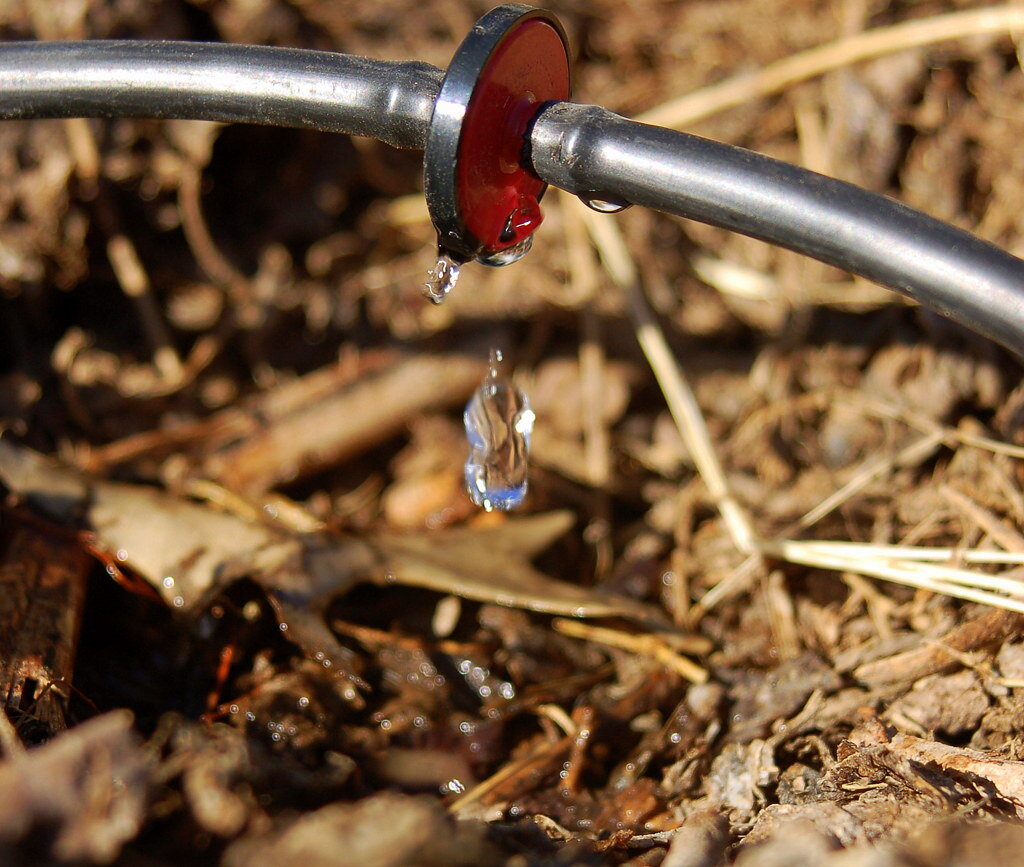
Photo Courtesy of Joby Elliott
Drip Irrigation is a great option for disease prone plants like tomatoes, peppers, and cucumbers because the water goes directly to the roots. Watering only the roots of the plants and nowhere else means two things. First, you’ll have less weeds because they aren’t receiving irrigation. Second, you save a lot of water because you’re only watering what you want to grow.
That being said, the direct watering can also be detrimental. If you trouble with the soil drying out easily or are growing root crops like carrots, it may not be the best choice.
Even though market gardeners JM Fortier and Curtis Stone use mostly overhead watering (see above) they still use drip irrigation for certain plants, especially those grown in greenhouses like tomatoes, peppers, and cucumbers. Below you’ll find a great video about how to use drip irrigation.

Drip irrigation can be a little bit complicated to set up compared to simple soaker hose sets or overhead watering. It is also much more expensive. You’ll want to make sure you know exactly how your going to set it up so that costly mistakes aren’t made.
Benefits of Drip Irrigation
-
Less water wasted
-
Won’t promote foliar diseases
-
Less weed pressure
Drawbacks of Drip Irrigation
-
Complicated set up (especially if you have no experience)
-
More expensive than other irrigation methods
-
Not good for soils with dry out easily or hot climates
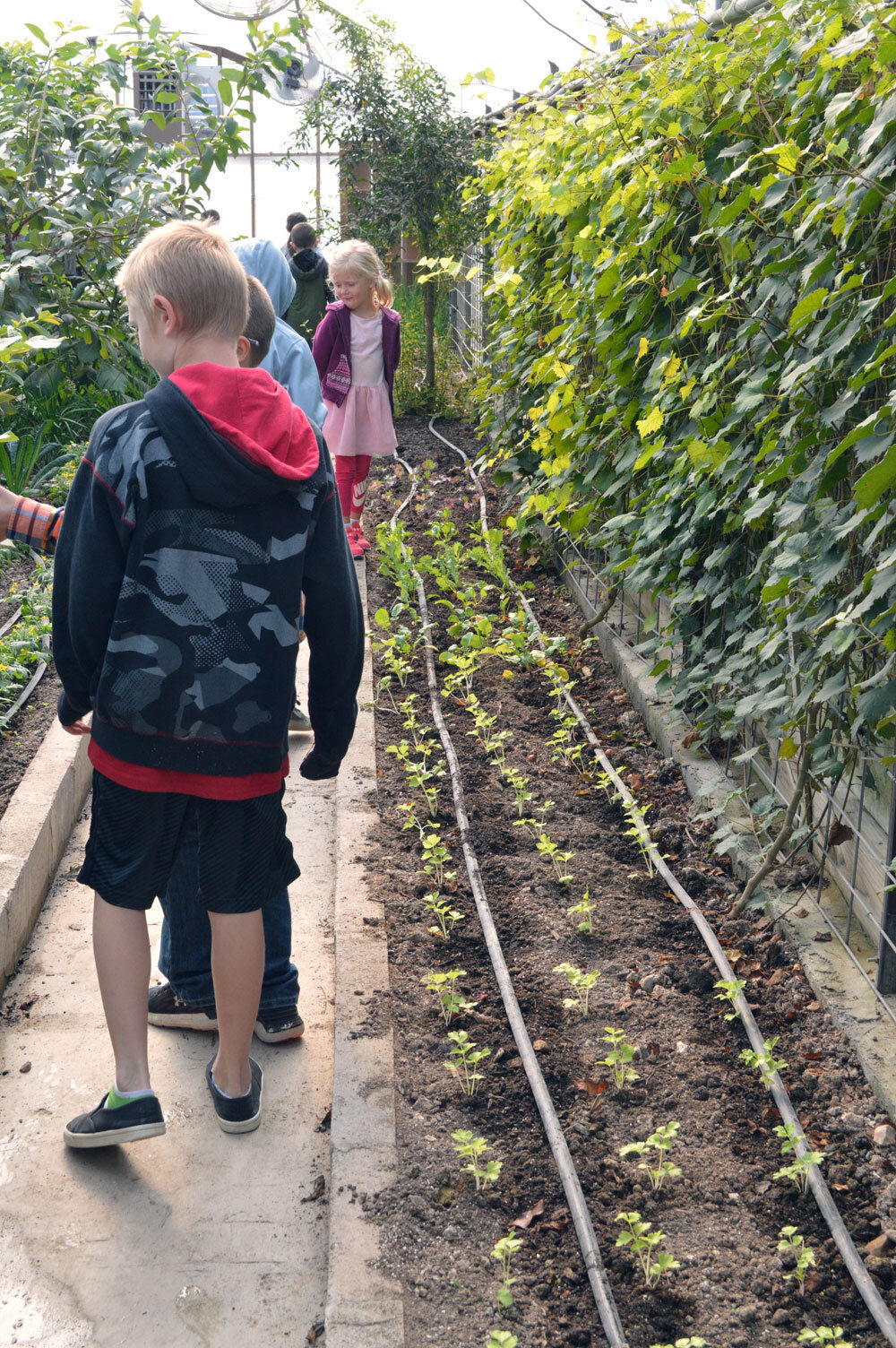
#3 Soaker Hose Irrigation
A soaker hose allows water to seep in very slowly to the ground instead of running off. The majority of soaker hoses are made from recycled rubber or a vinyl material.
The water drips slowly out of the entire line of hose making it a great option for direct root watering even if you don’t have perfect plant spacing.
It is easy to set up and get started even if you know very little about irrigation. Most of my experience with irrigation has been almost entirely with soaker hoses because I intermix plants that are more susceptible to foliar disease (tomatoes, peppers, etc) with those that aren’t (greens and roots) and I live in a rainy, humid area.
One consistent problem I’ve had with soaker hoses is they need to be on level ground to water properly. I’ve made the mistake of stringing soaker hoses between raised beds and it just doesn’t work as you can see in the image below.
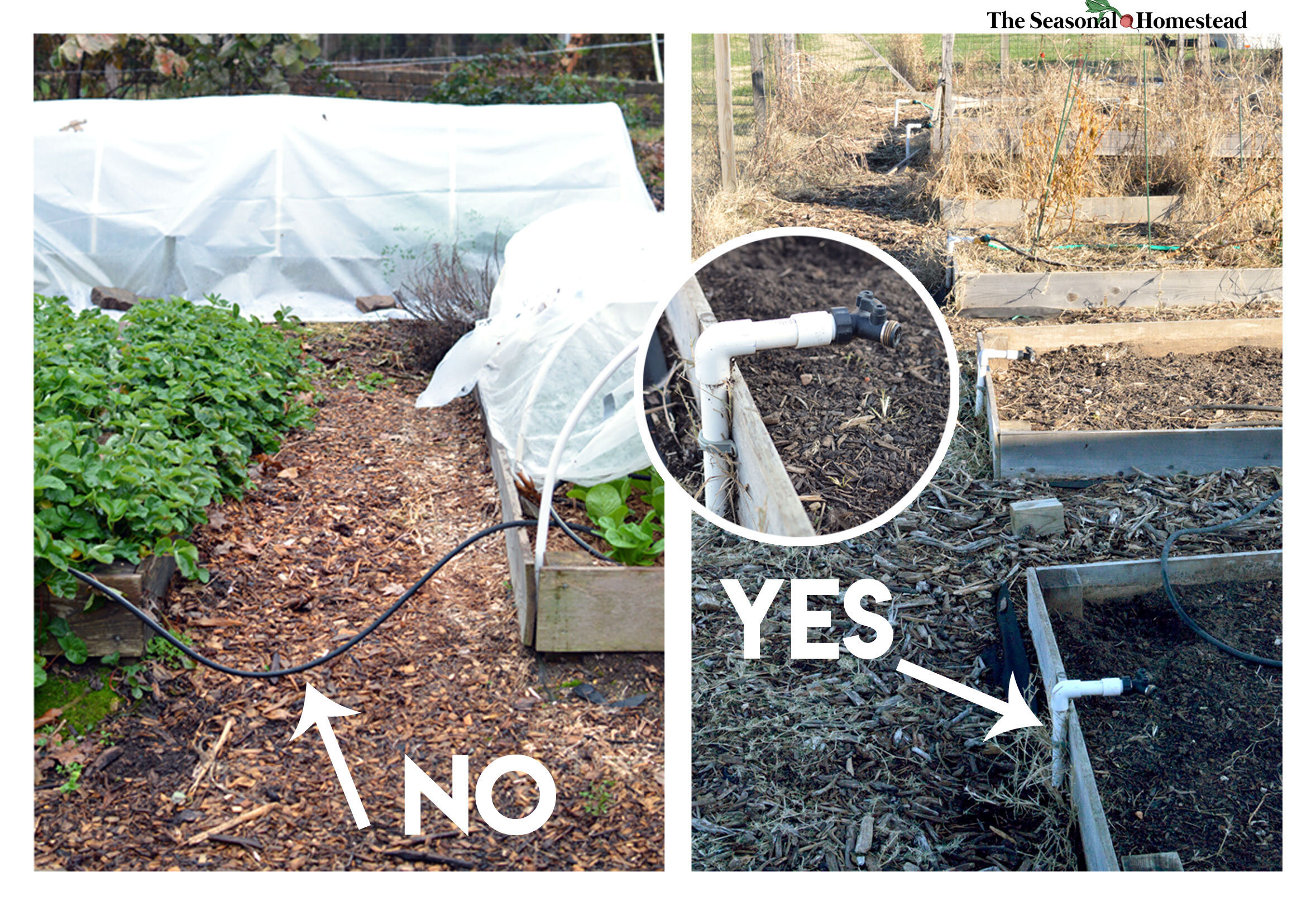
That is my own garden above for the bad example haha! And my friends garden is how it should be done.
Some good friends of ours buried their irrigation and used PVC. They piped it up to each raised bed. It is worth it to do a little extra work like this up front because there is no tripping over hoses or changes in the level of the hose. Any uneven ground will cause uneven watering with soaker hoses. Low spots will get more water and high spots will get less.

Benefits of soaker hoses
-
Less water waste
-
Won’t promote foliar diseases
-
Easy to set up for beginners
-
Uses recycled materials
Drawbacks of soaker hoses
-
Needs to be on level ground
-
Getting the pressure right can be tricky if you have multiple areas your are watering
-
Only lasts a few years before getting holes or wearing out.
Specific irrigation considerations for gardening through cold fall and winter months.
My most asked question with gardening through winter is “How do you water inside the low tunnels?”
Most of my low tunnels start out with a layer of polypropylene row cover fabric. This is permeable and will allow rainfall into the garden bed. As we approach a hard frost, I cover the garden beds with 3 or 6 mil plastic. It’s not permeable. For my in ground garden beds, they will usually wick up water from the area around the row with no need for extra irrigation.
The raised beds will occasionally dry out during warm spells through winter. Sometimes I can redirect the rain water from the plastic sheeting back into the raised bed. Other times, I will go ahead and hand water inside the garden bed.

Cleaning up irrigation for winter:
During winter, you’ll want to empty out your hoses and put all hose and irrigation supplies in a protected area if you want it to last longer.
One time we left our hose connected through the winter. It had a sprayer attached to the end of the hose to fill chicken water. As soon as it got below 10ºF, the entire hose froze and then the expansion pressure from frozen water inside burst the pipe just inside the crawl space of the house. It was a lesson learned the hard way but now we know better! We take off all the hoses and fill chicken water or watering cans for the garden straight from the spigot.
Conclusion:
Choosing the best irrigation system for a home garden is a personal choice based on many factors including geographic location, budget, and types of crops grown.
The best three options to choose from for a vegetable garden are overhead, drip, or soaker irrigation. It is imperative to the health and productivity of your plants to get the proper amount of water to the root system of the plants. Most times, rain alone is not enough for watering plants. Therefore, setting up an irrigation system is the best method to help to meet the needs of your plants and in turn give you a lush and productive garden.
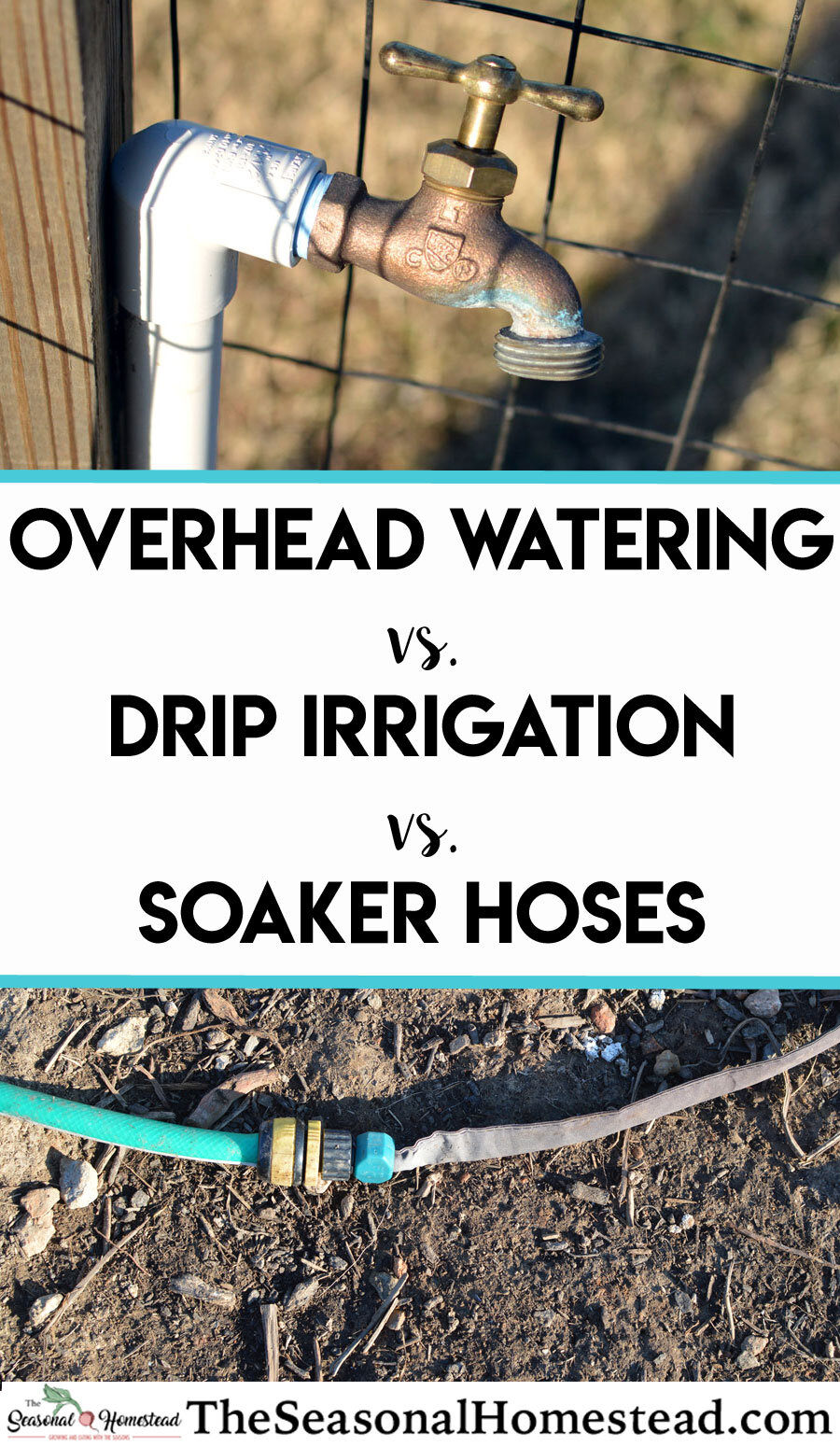
Further Reading:
-
Drip irrigation: https://extension.colostate.edu/topic-areas/yard-garden/drip-irrigation-home-gardens-4-702/
-
https://www.pubs.ext.vt.edu/content/dam/pubs_ext_vt_edu/426/426-322/426-322_pdf.pdf
Want to read more from this series? Check out Part 1 and Part 2 below.

